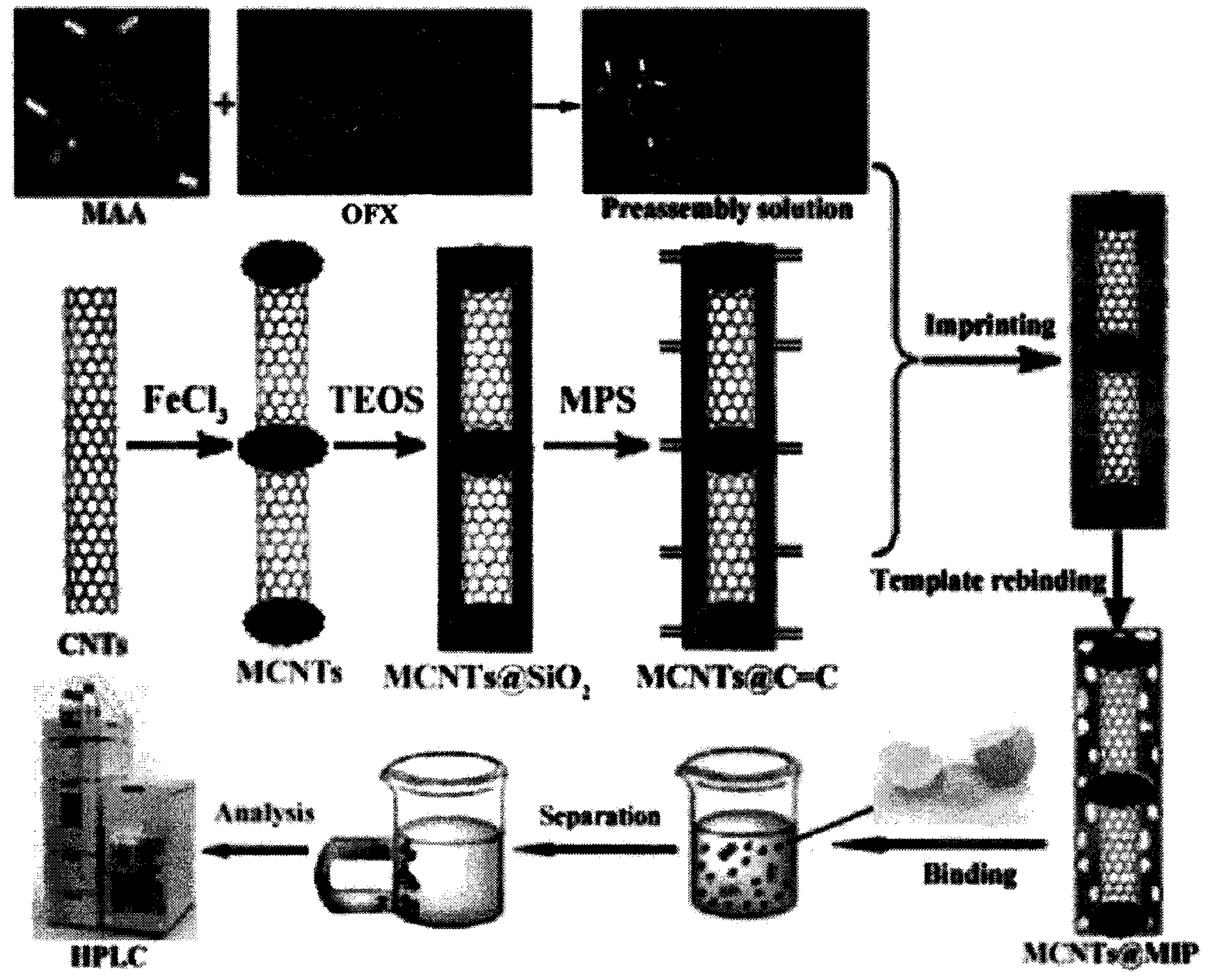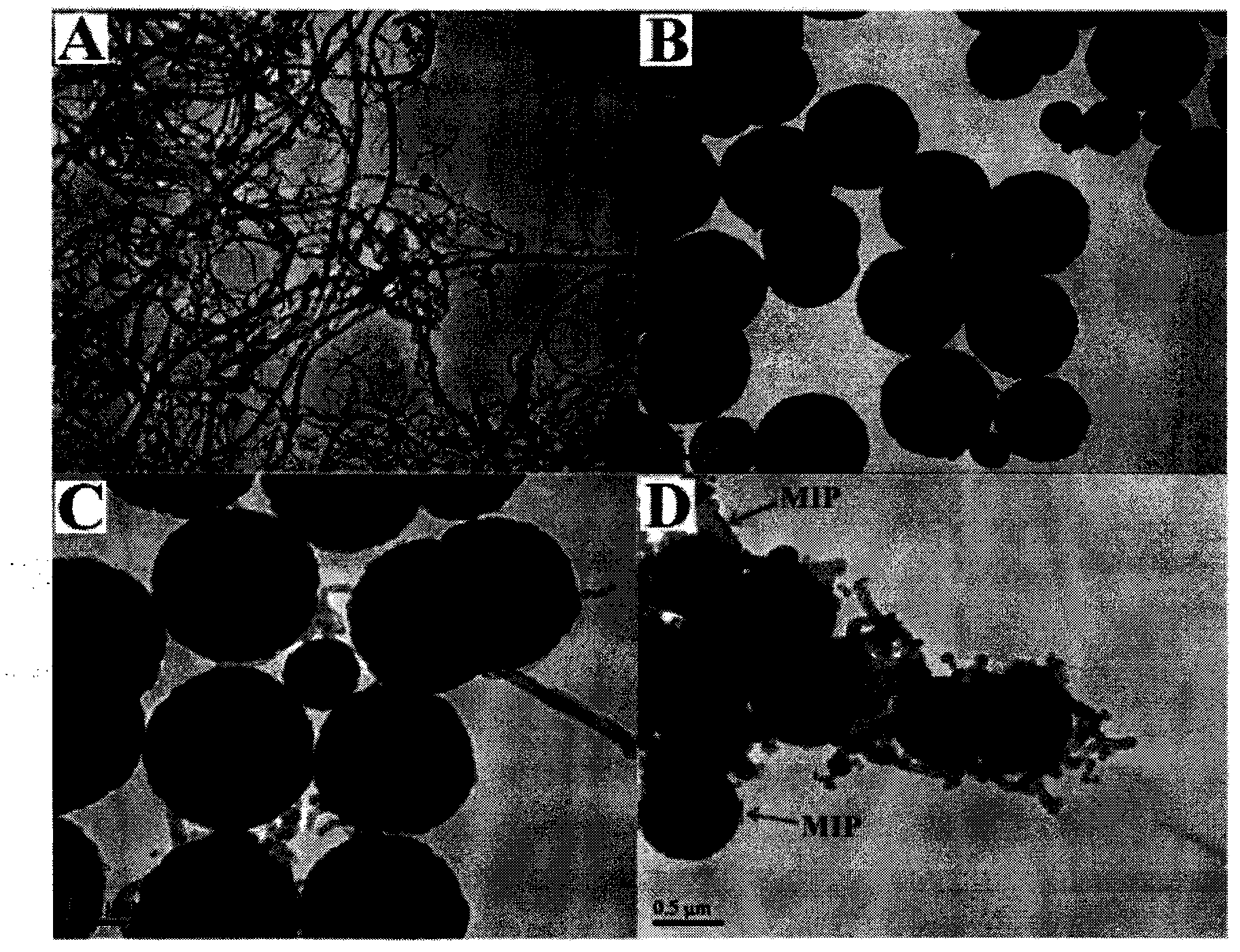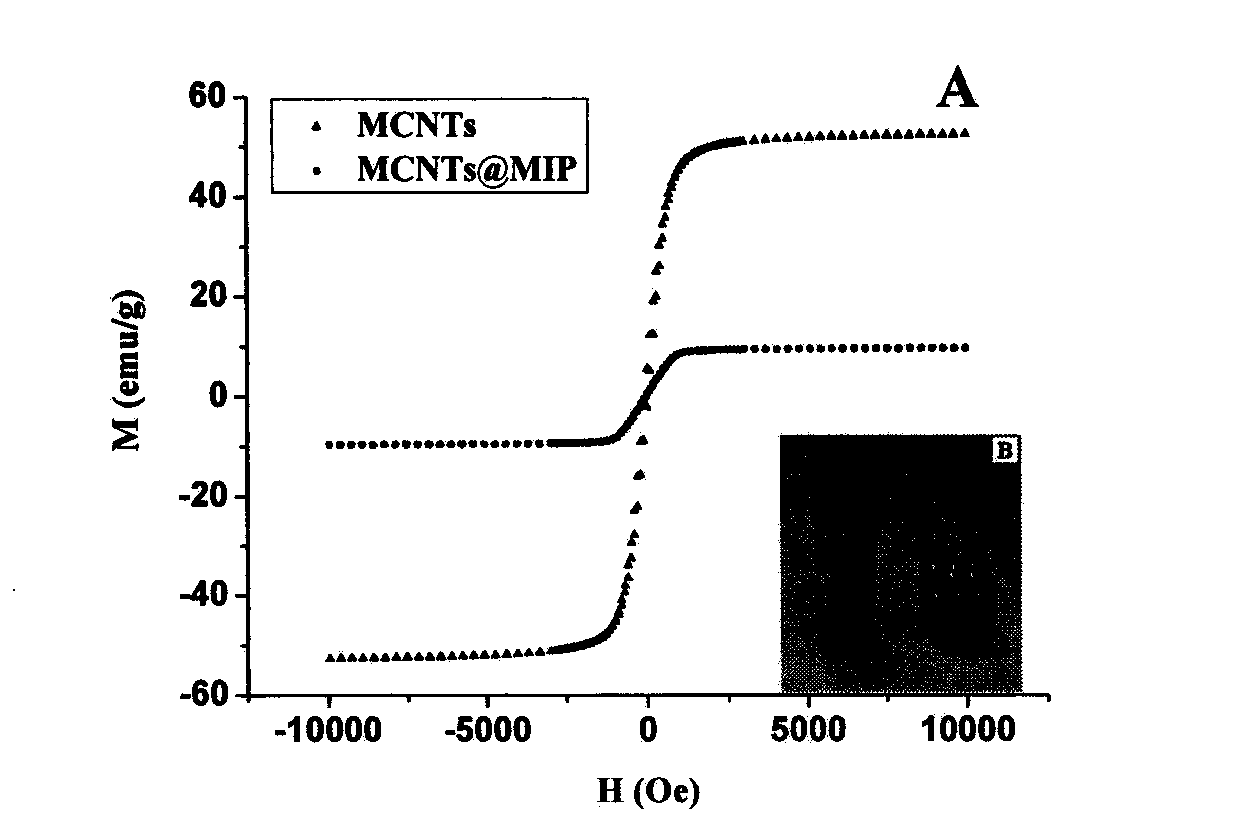Preparation method of magnetic carbon nano-tube surface molecular imprinting polymer for biological sample pretreatment
A technology of magnetic carbon nanotubes and molecular imprinting on the surface, which can be applied to chemical instruments and methods, and other chemical processes, and can solve problems affecting human health, etc.
- Summary
- Abstract
- Description
- Claims
- Application Information
AI Technical Summary
Problems solved by technology
Method used
Image
Examples
Embodiment 1
[0031] Add 0.5 g of multi-walled carbon nanotubes to 100 ml of concentrated HNO with a volume ratio of 1:3 3 - Concentrated H 2 SO 4 The mixed solution was sonicated for 2 h, and then refluxed at 80 °C for 12 h under magnetic stirring. Then, filter under reduced pressure, wash repeatedly with distilled water until neutral, dry in vacuum at 65°C overnight, and set aside;
[0032] Add 0.4g of the above-prepared carboxylated carbon nanotubes, 2.4g of ferric chloride, 3.4g of sodium acetate and 3.4g of sodium acrylate into a mixed solvent consisting of 22.5ml of ethylene glycol and 22.5ml of diethylene glycol, and sonicate for 1h Get a black mixed solution, transfer it to a polytetrafluoroethylene reaction kettle, seal it, and place it in a muffle furnace to react for 10 hours. After the reaction, cool to room temperature, wash it with methanol and water several times, and dry it in vacuum at 65°C. to constant weight, spare;
[0033] Dissolve 1 g of the above-prepared magnetic...
Embodiment 2
[0038] Add 0.5 g of multi-walled carbon nanotubes to 100 ml of concentrated HNO with a volume ratio of 1:3 3 - Concentrated H 2 SO 4 The mixed solution was sonicated for 2 h, and then refluxed at 80 °C for 12 h under magnetic stirring. Then, filter under reduced pressure, wash repeatedly with distilled water until neutral, dry in vacuum at 65°C overnight, and set aside;
[0039] Add 0.4g of the above-prepared carboxylated carbon nanotubes, 2.4g of ferric chloride, 3.4g of sodium acetate and 3.4g of sodium acrylate into a mixed solvent consisting of 22.5ml of ethylene glycol and 22.5ml of diethylene glycol, and sonicate for 1h Get a black mixed solution, transfer it to a polytetrafluoroethylene reaction kettle, seal it, and place it in a muffle furnace to react for 10 hours. After the reaction, cool to room temperature, wash it with methanol and water several times, and dry it in vacuum at 65°C. to constant weight, spare;
[0040] Dissolve 1 g of the above-prepared magnetic...
Embodiment 3
[0045] Add 0.5 g of multi-walled carbon nanotubes to 100 ml of concentrated HNO with a volume ratio of 1:3 3 - Concentrated H 2 SO 4 The mixed solution was sonicated for 2 h, and then refluxed at 80 °C for 12 h under magnetic stirring. Then, filter under reduced pressure, wash repeatedly with distilled water until neutral, dry in vacuum at 65°C overnight, and set aside;
[0046] Add 0.4g of the above-prepared carboxylated carbon nanotubes, 2.4g of ferric chloride, 3.4g of sodium acetate and 3.4g of sodium acrylate into a mixed solvent consisting of 22.5ml of ethylene glycol and 22.5ml of diethylene glycol, and sonicate for 1h Get a black mixed solution, transfer it to a polytetrafluoroethylene reaction kettle, seal it, and place it in a muffle furnace to react for 10 hours. After the reaction, cool to room temperature, wash it with methanol and water several times, and dry it in vacuum at 65°C. to constant weight, spare;
[0047] Dissolve 1 g of the above-prepared magnetic...
PUM
 Login to View More
Login to View More Abstract
Description
Claims
Application Information
 Login to View More
Login to View More - R&D
- Intellectual Property
- Life Sciences
- Materials
- Tech Scout
- Unparalleled Data Quality
- Higher Quality Content
- 60% Fewer Hallucinations
Browse by: Latest US Patents, China's latest patents, Technical Efficacy Thesaurus, Application Domain, Technology Topic, Popular Technical Reports.
© 2025 PatSnap. All rights reserved.Legal|Privacy policy|Modern Slavery Act Transparency Statement|Sitemap|About US| Contact US: help@patsnap.com



